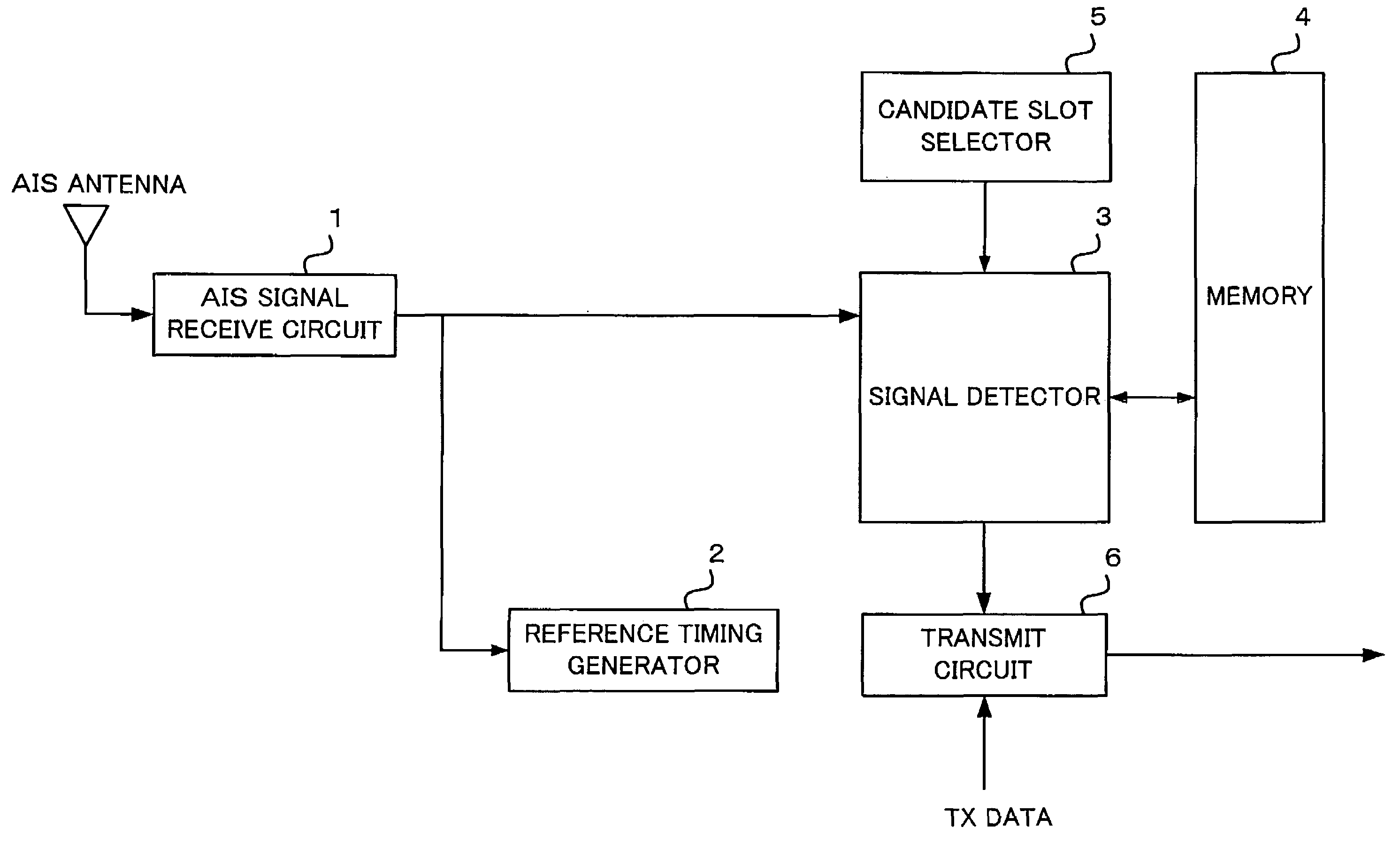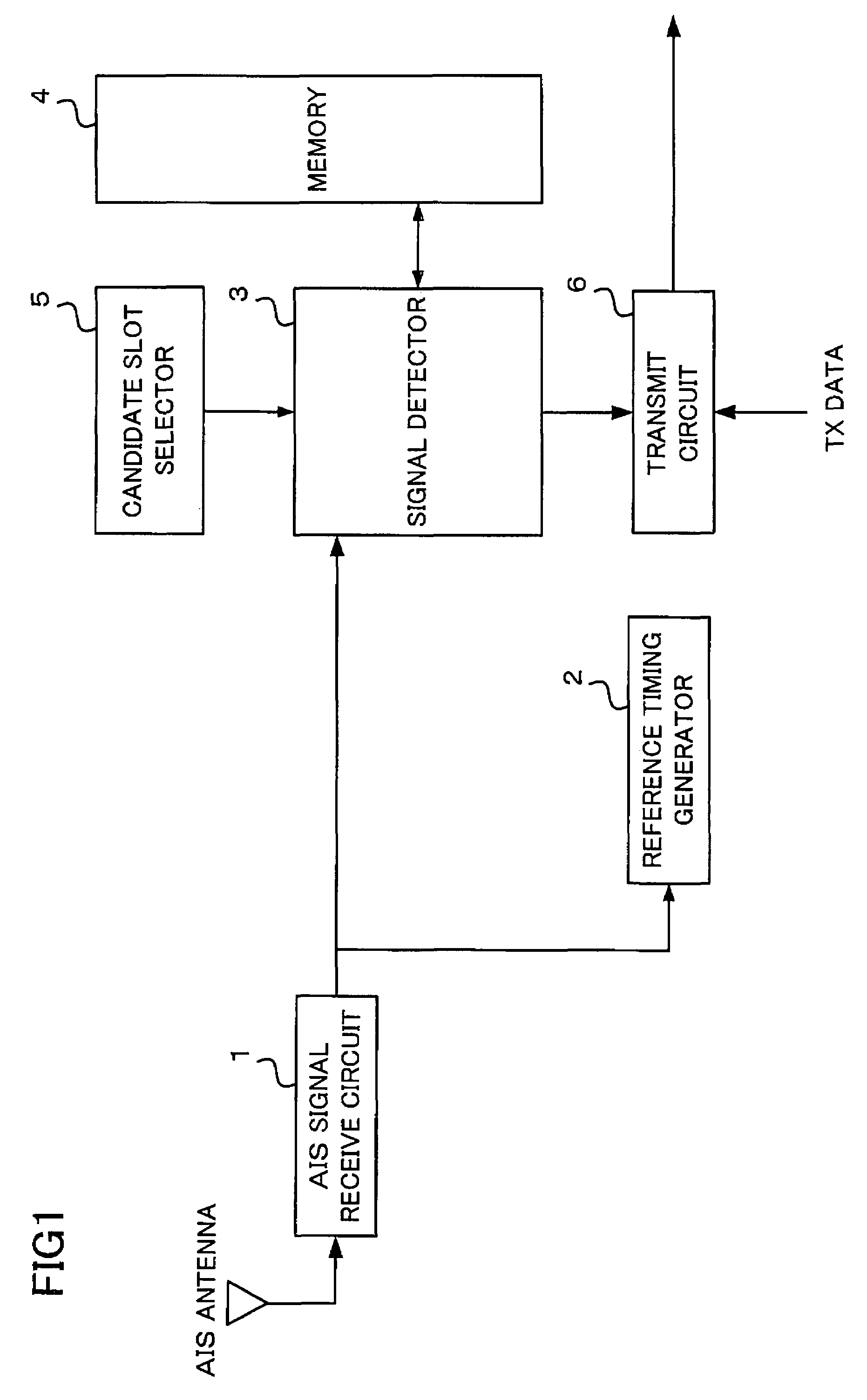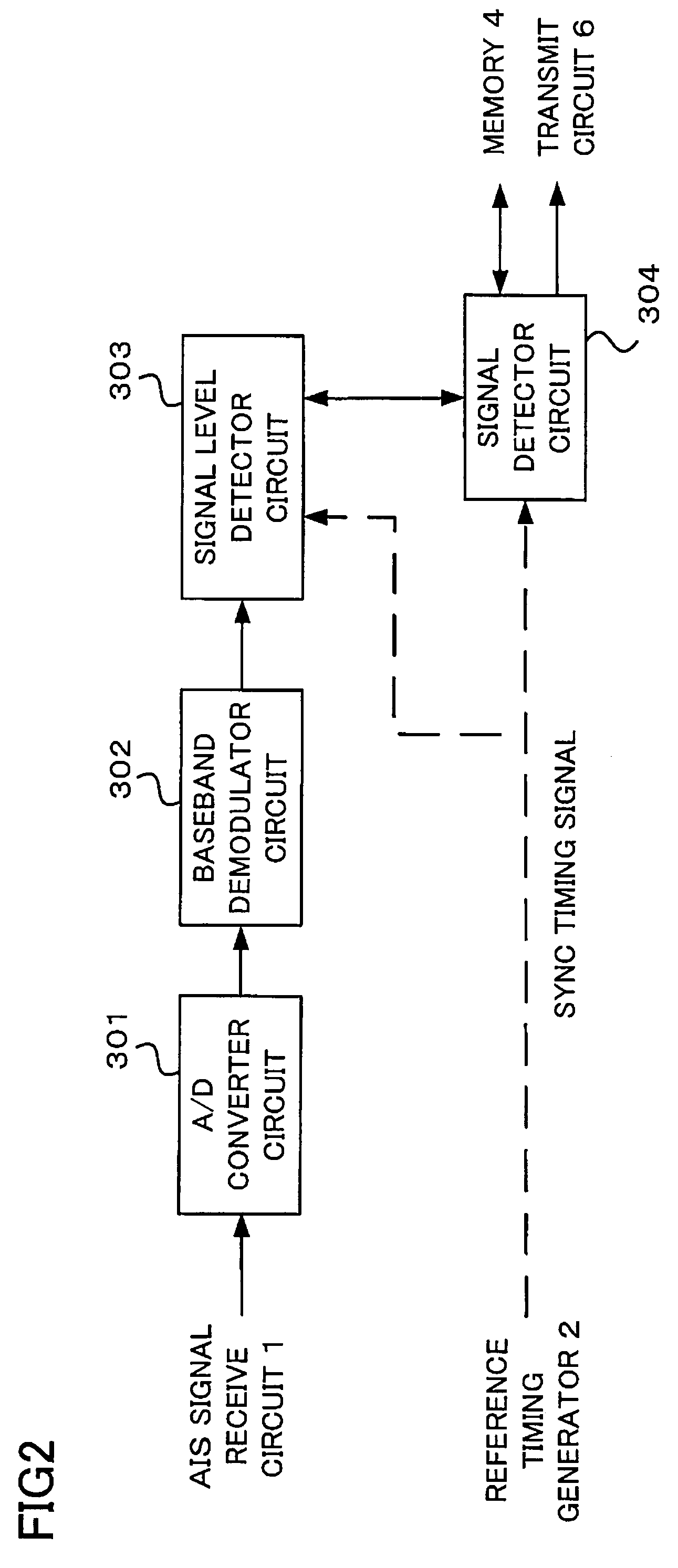Navigational aid and carrier sense technique
a technology of navigation aid and carrier sense, which is applied in the field of carrier sense technique and system, can solve the problems of reducing the number of bits that can be processed within a given period of time, and reducing the time duration of 2 ms, so as to achieve reliable and accurate fashion and reduce time
- Summary
- Abstract
- Description
- Claims
- Application Information
AI Technical Summary
Benefits of technology
Problems solved by technology
Method used
Image
Examples
first embodiment
[0046]FIG. 1 is a block diagram showing a configuration of a navigational aid according to a first embodiment of the invention. As shown in FIG. 1, the navigational aid (Class B AIS apparatus) includes an AIS signal receive circuit 1, a reference timing generator 2, a signal detector 3, a memory 4, a candidate slot selector 5 and a transmit circuit 6.
[0047]Connected to an AIS antenna, the AIS signal receive circuit 1 receives an AIS signal transmitted in a specified frequency band from a mobile station, such as a station installed on another ship (target ship) or a buoy, or a land-based fixed station and delivers the received signal to the reference timing generator 2 and the signal detector 3.
[0048]The reference timing generator 2 generates a synchronization timing signal used for controlling timing of communication with other AIS stations. Specifically, the reference timing generator 2 finds out a Class A station synchronized with GPS time using signals received from other AIS sta...
second embodiment
[0075]FIG. 5 is a block diagram showing a configuration of a navigational aid according to a second embodiment of the invention, in which elements like those of the first embodiment are designated by like reference numerals. As shown in FIG. 5, the navigational aid (Class B AIS apparatus) includes an AIS signal receive circuit 1, a reference timing generator 2, a signal detector 3, a memory 4, a candidate slot selector 51 and a transmit circuit 6.
[0076]While the AIS apparatus of the second embodiment performs all the functionality of the aforementioned AIS apparatus of the first embodiment, the AIS apparatus of the second embodiment is characterized in that the candidate slot selector 51 chooses candidate slots based on a state of previous use of time slots.
[0077]Like the candidate slot selector 5 of the first embodiment, the candidate slot selector 51 nominates 10 time slots. These 10 time slots are referred to as “candidate slots” from which the AIS apparatus potentially selects o...
third embodiment
[0084]FIG. 6 is a block diagram showing a configuration of a navigational aid according to a third embodiment of the invention, in which elements like those of the first embodiment are designated by like reference numerals. As shown in FIG. 6, the navigational aid (Class B AIS apparatus) includes an AIS signal receive circuit 1, a reference timing generator 2, a signal detector 31, a candidate slot selector 5 and a transmit circuit 6.
[0085]What is characteristic of the AIS apparatus of the third embodiment is that the signal detector 31 makes a judgment on the presence or absence of an information signal by performing pattern recognition of a baseband signal, and not by evaluating the signal intensity level as in the aforementioned AIS apparatus of the first embodiment.
[0086]The signal detector 31 performs pattern recognition operation to determine whether a baseband signal obtained by demodulating a signal received by the AIS signal receive circuit 1 is an information signal. Speci...
PUM
 Login to View More
Login to View More Abstract
Description
Claims
Application Information
 Login to View More
Login to View More - R&D
- Intellectual Property
- Life Sciences
- Materials
- Tech Scout
- Unparalleled Data Quality
- Higher Quality Content
- 60% Fewer Hallucinations
Browse by: Latest US Patents, China's latest patents, Technical Efficacy Thesaurus, Application Domain, Technology Topic, Popular Technical Reports.
© 2025 PatSnap. All rights reserved.Legal|Privacy policy|Modern Slavery Act Transparency Statement|Sitemap|About US| Contact US: help@patsnap.com



